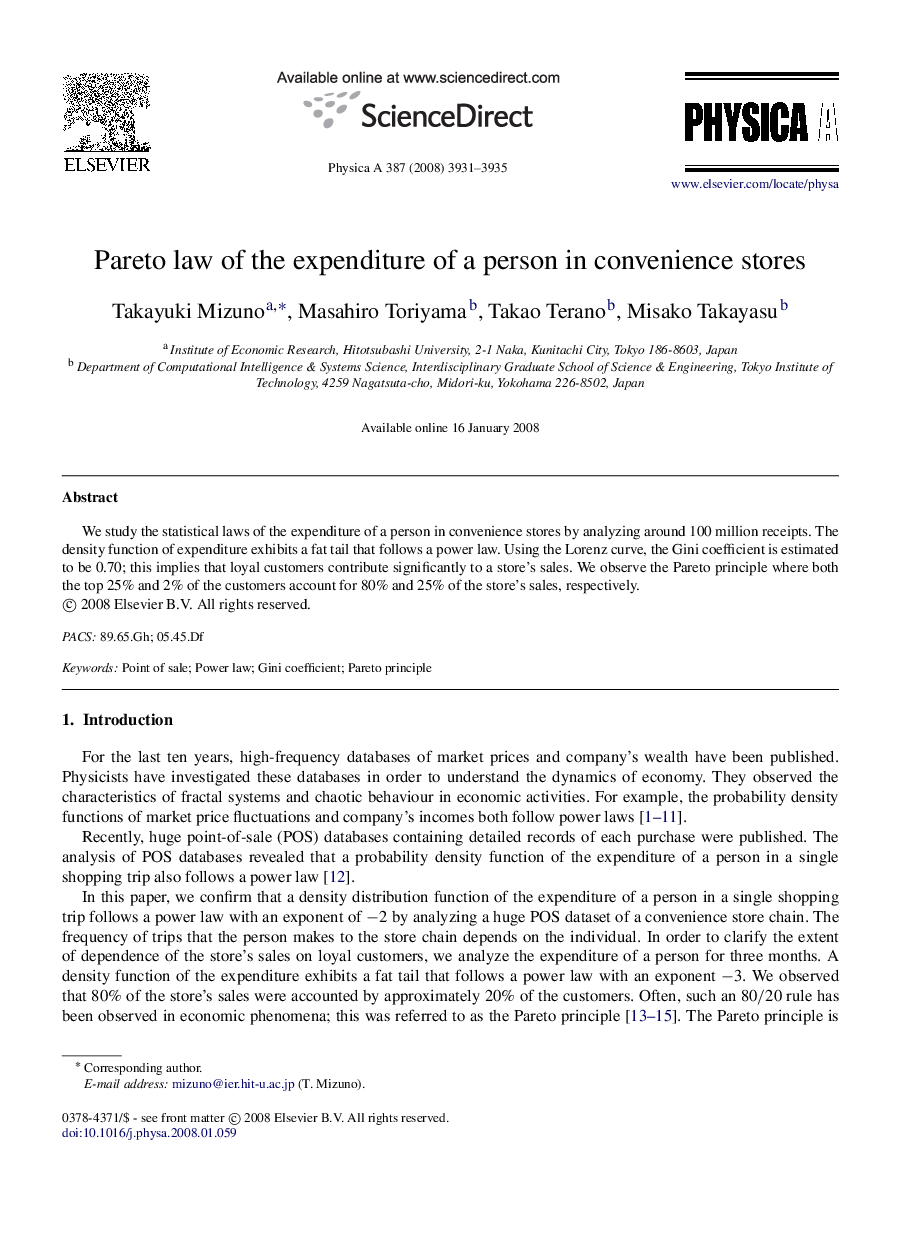| Article ID | Journal | Published Year | Pages | File Type |
|---|---|---|---|---|
| 977985 | Physica A: Statistical Mechanics and its Applications | 2008 | 5 Pages |
Abstract
We study the statistical laws of the expenditure of a person in convenience stores by analyzing around 100 million receipts. The density function of expenditure exhibits a fat tail that follows a power law. Using the Lorenz curve, the Gini coefficient is estimated to be 0.70; this implies that loyal customers contribute significantly to a store’s sales. We observe the Pareto principle where both the top 25% and 2% of the customers account for 80% and 25% of the store’s sales, respectively.
Related Topics
Physical Sciences and Engineering
Mathematics
Mathematical Physics
Authors
Takayuki Mizuno, Masahiro Toriyama, Takao Terano, Misako Takayasu,
